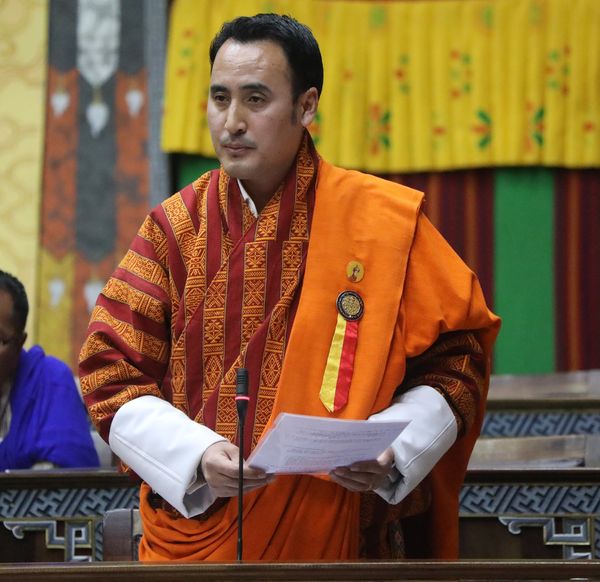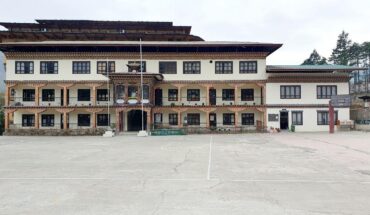
NGAWANG JAMPHEL
Thimphu
In the ongoing National Assembly session, Members of Parliament raised the issue regarding the high cost of telecom data during the questions hour session on 29 November.
The issue of reducing telecom charges by 50%, previously discussed in the first session of the Fourth Parliament, was revisited, prompting responses from the Ministry of Industry, Commerce, and Employment (MoICE).
The Khar-Yurung MP Sangay Thinley expressed concerns about the government’s progress in reducing telecom data charges. The Member asked when the public could expect these reductions, as discussed earlier, and questioned whether the government would consider introducing a third telecom provider, such as Starlink if talks with existing telecom providers fail to bring about the desired results.
The Sergithang-Tsirang Toed MP Lhakpa Tshering Tamang also raised a similar issue, focusing on the high internet data costs despite the government’s efforts to address it. The Member requested clarity on the specific measures to reduce data costs and whether these reductions would be implemented by the end of 2024.
In response to the concerns raised, the Minister for MoICE, Namgay Dorji, assured the House that the government is fully committed to reducing telecom data charges by 50%, which is part of the ongoing National Digital Transformation Plan. The Minister explained that the initiative has been incorporated into the 13th Five-Year Plan and set in motion with directives from the Prime Minister himself.
The Minister emphasized that the government is collaborating with various stakeholders, including Gov-Tech, the Bhutan InfoComm and Media Authority (BICMA), and telecom service providers, to reduce the charges. A special committee has been established to oversee this process and is expected to deliver its findings by August 2024.
“The effort to reduce telecom data charges is a part of the government’s broader plan to transform Bhutan’s digital infrastructure, making it more accessible and affordable for the public,” the Minister stated.
The Minister further elaborated that while the reduction process would take some time to fully implement, there is a strong likelihood that the 50% reduction target will be achieved by the end of this year.
Additionally, the Minister noted that the Prime Minister has been engaging with the Indian government to address the issue of data imports, which could help further reduce costs for telecom service providers. The Minister reiterated that these initiatives align with the government’s overarching goal of making digital services more affordable and accessible to the Bhutanese public.
While the government’s efforts have been acknowledged, many members of the public continue to feel the strain of high internet costs, particularly in rural areas where access to affordable digital infrastructure is limited.
A resident from Thimphu shared, “It’s encouraging to hear that the government is working on reducing telecom charges. Internet data has become essential for both work and study, and it’s increasingly becoming difficult to afford. I hope they follow through on their plans soon.”
Ngawang Phuntsho, another Thimphu resident expressed frustration over the prolonged delays in implementing these reductions. “We were promised reductions in data charges, but the costs remain the same. Many of us, especially those working from home, rely heavily on the internet, and the high prices are a serious burden.”
In rural areas, where access to affordable internet is even more limited, the situation is more pressing. A farmer from the Samdrup Jongkhar voiced his concerns, saying, “I have heard about the government’s plan to reduce telecom charges, but it hasn’t made any difference in my daily life yet. In rural areas, even the simplest internet connection is expensive, and the current charges make it hard for us to keep up.”
Tshiltrim Singye, a student from Gelephu shared a similar sentiment: “The internet is crucial for our studies, but the high data costs make it difficult for many students in my area. I’m hopeful that the 50% reduction will be implemented quickly, so we can focus on our education without worrying about data costs.”
One aspect that has been highlighted in the discussions is the potential introduction of new telecom providers, such as Starlink, if negotiations with existing providers do not yield results. The Khar-YurungMP constituency suggested that having a third telecom provider could create more competition in the market and potentially drive down prices.
The government has not ruled out the idea of introducing a third telecom provider to the Bhutanese market, but it remains to be seen whether this step will be necessary. The Minister for MoICE stated, “We are continuously monitoring the situation and evaluating all options. If necessary, we will explore other avenues to ensure that the public benefits from affordable and reliable telecom services.”
However, experts believe that much more needs to be done to address the challenges of affordability and accessibility. A digital infrastructure expert in Thimphu pointed out, “While the government’s digital transformation initiatives are commendable, the affordability of telecom services remains a major barrier for many Bhutanese, especially in rural areas. A more comprehensive approach is needed to ensure that everyone can benefit from these services.”
The efforts to reduce telecom data charges in Bhutan reflect the government’s recognition of the growing importance of digital connectivity in everyday life. While challenges remain, the Minister for MoICE assured the House that significant progress is being made towards achieving the target of a 50% reduction by the end of 2024.
However, as seen from the reactions of the general public, there is a pressing need for these efforts to be realized soon. The affordability and accessibility of telecom services, particularly in rural areas, remain a key issue that the government must continue to address in order to fully realize the benefits of its digital transformation vision.




